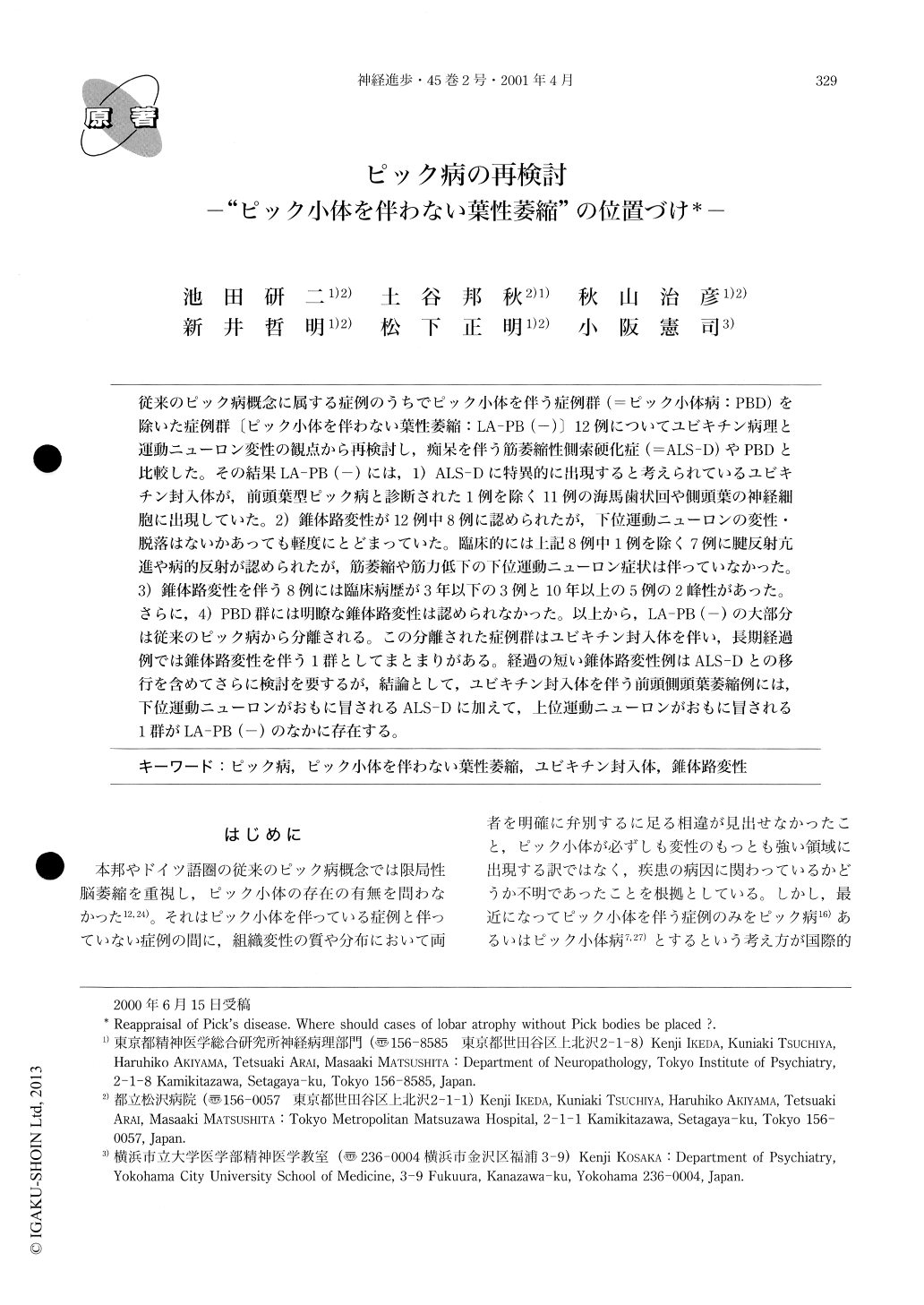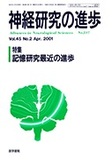Japanese
English
- 有料閲覧
- Abstract 文献概要
- 1ページ目 Look Inside
従来のピック病概念に属する症例のうちでピック小体を伴う症例群(=ピック小体病:PBD)を除いた症例群〔ピック小体を伴わない葉性萎縮:LA-PB(-)〕12例についてユビキチン病理と運動ニューロン変性の観点から再検討し,痴呆を伴う筋萎縮性側索硬化症(=ALS-D)やPBDと比較した。その結果LA-PB(-)には,1)ALS-Dに特異的に出現すると考えられているユビキチン封人体が,前頭葉型ピック病と診断された1例を除く11例の海馬歯状回や側頭葉の神経細胞に出現していた。2)錐体路変性が12例中8例に認められたが,下位運動ニューロンの変性・脱落はないかあっても軽度にとどまっていた。臨床的には上記8例中1例を除く7例に腱反射亢進や病的反射が認められたが,筋萎縮や筋力低下の下位運動ニューロン症状は伴っていなかった。3)錐体路変性を伴う8例には臨床病歴が3年以下の3例と10年以上の5例の2峰性があった。
The conventional concept of Pick's disease regards lobar atrophy as important and takes no notice of the presence of Pick bodies. In Japan, the numbers of patients with lobar atrophy without Pick bodies 〔LA-PB (-)〕 are thought to be nearly the same as those with Pick bodies (Pick body disease; PBD). LA-PB (-) is characterized as lacking a distinct pathology such as tau-or ubiquitin-positive substances, and its placement in Pick's syndrome is a matter of argument. A reappraisal of 12 cases of LA-PB (-) in regard to ubiquitin pathology and degeneration of the pyramidal system revealed some significant facts concerning ubiquitin inclusion and pyramidal tract degeneration. They were compared with 10 cases of amyotrophic lateral sclerosis with dementia (ALS-D) as well as 11 cases of PBD and discussed.
The results of the findings of the 12 patients with LA-PB (-) are summarized as follows: 1) Ubiquitin inclusions, which are regarded as specific to ALS-D, appeared also in neurons of the dentate gyrus and temporal lobes of 11 patients with LA-PB (-), except for one who was diagnosed as having frontal type Pick's disease. 2) Eight of 12 cases were accompanied with a various degree of pyramidal tract degeneration. Lower motor neurons, however, were preserved or degenerated to a slight degree in contrast to obvious pyramidal tract degeneration. 3) Seven of eight patients with pyramidal tract degeneration revealed accentuation of the tendon reflex and/or pathological reflex in their clinical course. Muscle atrophy or muscle weakness was not noted in these eight patients.

Copyright © 2001, Igaku-Shoin Ltd. All rights reserved.


